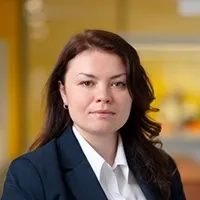- Home
- Painkiller
- Types of Headaches
Types of Headaches
We are going to look into the main types of headaches in this article. We’ll also explain the reason behind the tension headache.
What types of headaches are there?
From a medical point of view, distinguished are between two large groups of headaches:
- Primary.
- Secondary.
Primary headaches are the most common ones; they are not a symptom of another disease but develop on their own. Secondary headaches develop due to another medical condition or when there is an underlying cause of the pain.
Among primary headaches, the most common types are:
- tension headache;
- migraine;
- cluster headache.
Here is a visual trip into the world of headache – in the joint project by Darnytsia and Wonderzine.
Tension headache
Tension headache is an official diagnosis which is defined by the International Classification of Diseases, although it is generally considered a “common headache” that affects more than half the population from time to time. Patients often describe it as wrapping around the head like a hoop and creating a “hard pressure sensation, like a helmet.” The pain usually begins in the back of the head or forehead and spreads to the entire head within half an hour.
Tension-type headache: symptoms
Tension headaches are often triggered by stress and emotional overload. Also, the nature of tension headaches is associated with overwork of shoulder muscles and neck, which subsequently causes pain. The risk of it happening, in turn, can be increased by lack of sleep, prolonged work at the computer, and even staying in an uncomfortable position. The role of the vascular component, in particular vasospasm, in the development of this type of pain has not been proven to date.
About 70% of the world’s population suffer from tension headaches at different periods of life, and a vast majority of women aged 20 to 40 years are among them. Ukrainians are no exception, and the problem of this type of headache is very common in our country. Since solving pain problems is one of the strategic directions of the Darnytsia pharmaceutical company, its specialists understand its nature and how to help it.
As for the treatment of tension headaches, leading modern international guidelines recommend a combination of pharmacological and non-pharmacological methods. In particular, this approach is actively used in Europe and the USA. Antispasmodics are not mentioned in the recommendations.
Analgesics, nonsteroidal anti-inflammatory drugs, or a combination of them with caffeine are used as pharmacological means to combat this type of pain. For example, acetylsalicylic acid + paracetamol + caffeine. It is exactly caffeine that is believed to enhance the effectiveness of this combination. It is these active ingredients that are contained in “Citramon-Darnytsia” and “Citramon Maxi”* from the pharmaceutical company Darnytsia.
In order to reduce the risk of tension headaches, doctors advise using non-pharmacological methods such as identifying and preventing headache triggers. In addition, a positive effect on the incidence of tension headaches may have:
- a well-balanced diet;
- physical exercise;
- establishing a sleeping routine.
Daily walks in the fresh air, massage of the neck and shoulders, and regular rest will also help ease the condition.
Migraine
Migraine predominantly occurs in women and is less common than tension headaches. A migraine attack is often accompanied by a pulsating headache, often unilateral - affecting one half of the head. Sometimes the pain starts from the back of the head, moves to the temple and concentrates in the eye area.
Migraine: symptoms
Migraines are sometimes described as if there are wasps biting the eyes or someone is hitting one part of the head with a hammer. Migraines are most often accompanied by nausea or vomiting, photophobia and phonophobia (intolerance of light or sounds). Migraine headaches worsen with physical activity.
Triptans, specific drugs against migraine attacks, for example eletriptan, can be used for high control of attacks.
Triptans affect one of the links in the pathogenesis of migraine, they are agonists of serotonin receptors and can reduce the pain component. They show their effect within two hours, so they need to be applied as early as possible from the onset of the attack. These are prescription drugs that should be prescribed by a doctor only after a diagnosis of migraine has been made. An example of such a drug is Elptan.**
In the special project of Darnytsia and Ukrayinska Pravda you can learn about the characteristics of migraine in women, and pharmacological and non-pharmacological methods of treatment.
Cluster headache
Cluster headache is the most severe and, fortunately, not very common type of primary pain (according to statistics, up to 0.1% of the prevalence in the world).
Symptoms of the cluster headache
Cluster headaches have their own specific symptoms, like watery eyes, sweaty skin, redness and swelling of the eyes, and stuffy nose. In addition, the pain is severe, it manifests itself in a series of attacks (the so-called bunch), which last from 15 to 180 minutes and keep repeating. A series of attacks can occur over the course of several weeks or even months - this is extremely debilitating for a person.
During the attack, psychomotor agitation occurs, it is difficult for a person to be at rest, he or she can walk or even run in a circle. Cluster headaches can lead to panic attacks, depression and suicidal thoughts.
* “Citramon-Darnytsia” RL № UA/6550/01/01, “Citramon Maxi” RL № UA/17370/01/01
** “Elptan” РП № UA/18414/01/01, № UA/18414/01/02, № UA/18414/01/03prescribed by a doctor and available with a prescription

